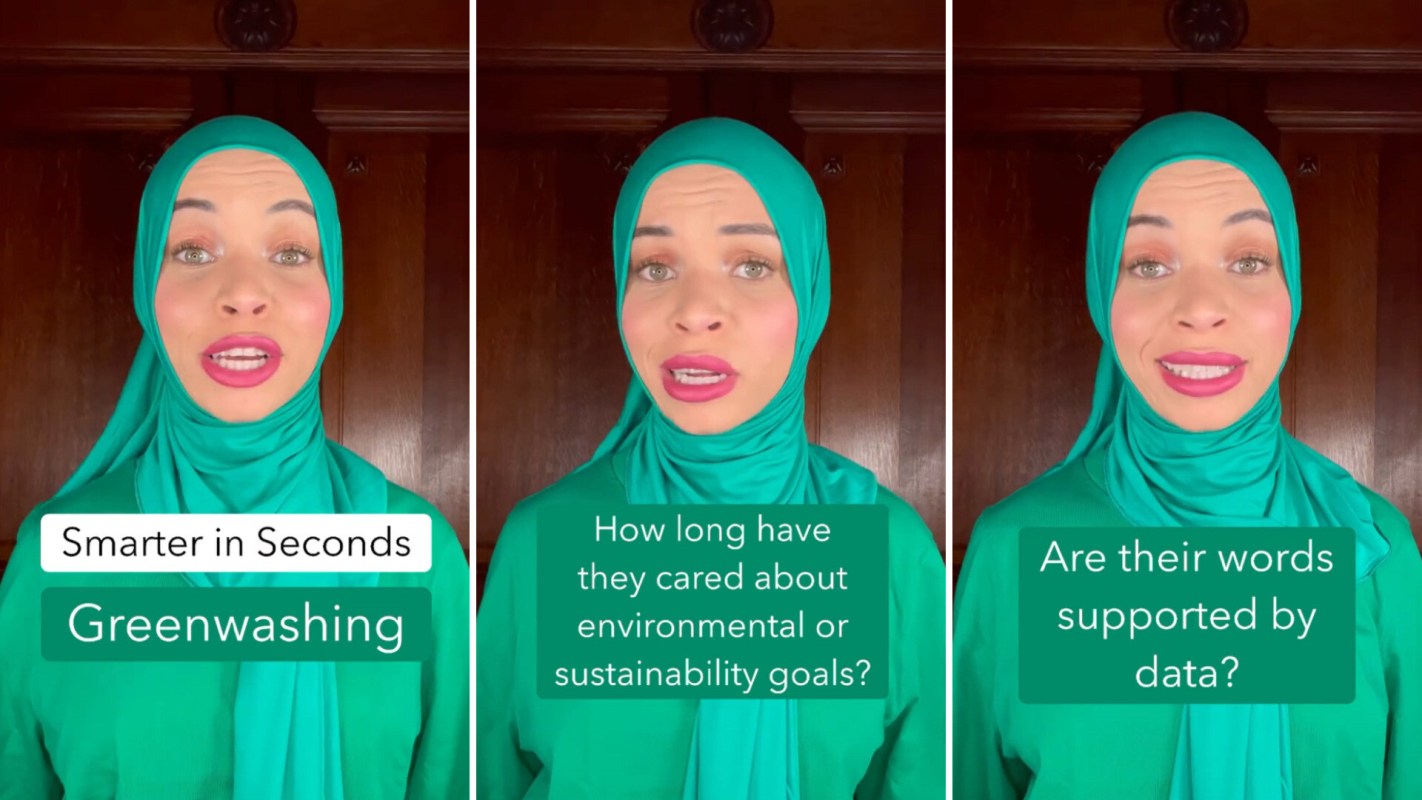Conscious consumerism is on the rise, and many brands are eager to jump on the sustainability bandwagon. But sometimes that desire can mislead or downright confuse consumers. That's where greenwashing comes in.
What is greenwashing?
Greenwashing is an advertising tactic in which companies or institutions make false or exaggerated claims about how environmentally friendly their products are. At its worst, it deliberately preys on consumers who want to be more eco-conscious.
Big banks, fashion brands, fossil fuel companies, food brands, and even governments are frequent culprits.
In a recent investigation into Big Oil, Congress's House Oversight Committee details how major oil companies greenwash their public image by advertising their "net-zero" pledges — commitments to add little to no planet-warming gases to the atmosphere — while simultaneously continuing to invest in dirty energy.
Internal documents obtained from the American Petroleum Institute (which lobbies in favor of the oil industry) show how oil executives often overstate the benefits of minor environmentally friendly changes.
Where did greenwashing come from?
Environmentalist Jay Westerveld coined the term "greenwashing" in the mid-80s when he saw a hotel claiming that it was helping save the environment by reusing its towels. In a now-famous essay, Westerveld highlighted the irony in the hotel's statements, calling out the hotel for other wasteful practices and pointing out that the reused towels were actually just saving them money on their water bill.
The essay was published a year after Chevron released its "People Do" campaign, which highlighted the work they were doing to preserve a butterfly species near one of their oil refinery plants. This campaign ran while Chevron was also embroiled in a legal battle with the Environmental Protection Agency over wastewater from the same plant — which the company was illegally dumping into Santa Monica Bay.
How you can spot greenwashing
It's important to do your own research into whether a company's claims about a product are true. That includes understanding how environmentally friendly a brand's overall industry is and the company's history with sustainability.
One way to tell if a product is truly sustainable is to look for a certification from product certification companies like Fair Trade. This is especially important because brands can easily slap words like "organic" onto their products without making many changes to how they're made.
Companies may also highlight certain positive information about a product while hiding negative aspects of its production. For example, ads for electric cars highlight the environmental benefits of not using dirty energy-based cars but they don't usually tell consumers about the toxic environmental damage from lithium mining, a key mineral used in EV batteries.
TCD Picks » Upway Spotlight

In the past year, fashion brand H&M has faced multiple lawsuits for making false claims about the sustainability of its eco-friendly clothing lines. The company's "Conscious Choice" collection emphasizes the clothes are made out of recyclable material, but the material is still made of polyester — a plastic derived from fossil fuels.
Another sign of greenwashing is when companies state lofty or ambitious goals without providing a clear roadmap to how they'll achieve them.
In 2018, Nestle committed to making sure its packaging would be 100% recyclable by 2025, but environmental groups pointed out how the company didn't release any detailed steps or timelines. The promise was especially troubling to activists because at least 91% of plastic waste doesn't get recycled.
So where can you turn? Smaller brands and local producers are likely to be more sustainable and less environmentally destructive than large-scale retailers. It's always good to do your research, shop locally, and compare products before making a decision.
Follow The Cool Down on Instagram and subscribe to our newsletter.

 (@blairimani)
(@blairimani)











